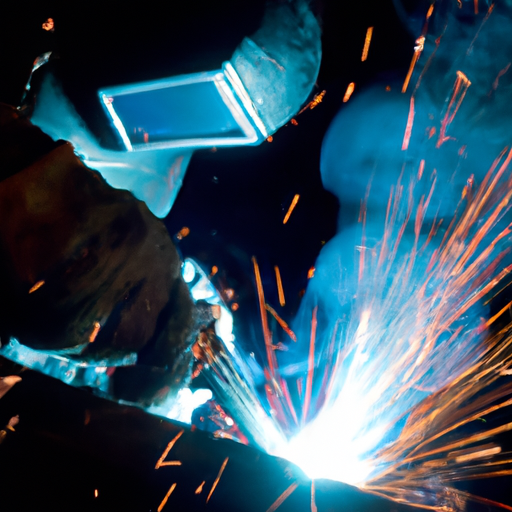If you’ve ever considered venturing into the world of welding, you may have wondered which type is the most challenging to master. With various methods available, each with its own complexities, it can be overwhelming to select a starting point. From the intricate artistry of TIG welding to the precision required in underwater welding, the range of skills demanded can make the decision seem daunting. In this article, we will explore the different types of welding and delve into their unique challenges, helping you navigate the path towards becoming a skilled welder.
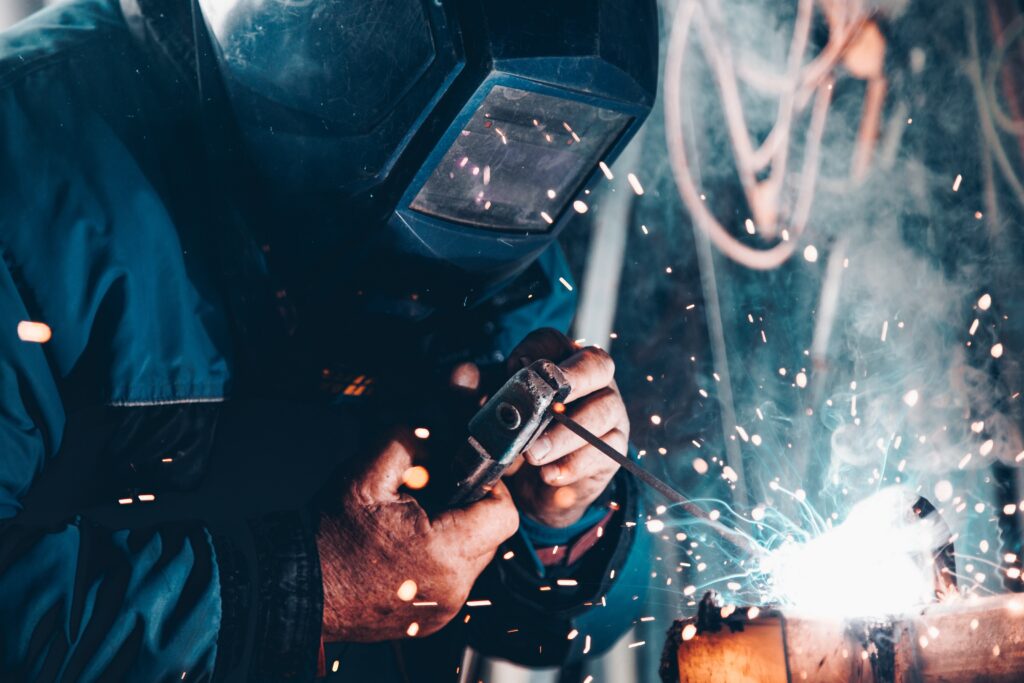
Understanding Welding and Its Importance
Welding is a vital process that plays a crucial role in various industries and fields. It involves joining two or more pieces of metal together through the application of heat, pressure, or both. The resulting bond is strong and durable, making welding an essential skill for construction, manufacturing, automotive, and many other sectors.
Defining welding
Welding is a fabrication process that melts the edges of metal pieces and fuses them together. While typically associated with metals, welding can also be performed on thermoplastics and other materials. It creates a permanent connection that retains the original strength of the materials being joined.
Applications of welding in different fields
Welding finds extensive applications across numerous industries. In the construction industry, it is used to join structural steel components, reinforcing bars, and pipelines. In manufacturing, welding is crucial for the production of machinery, appliances, and fabricated metal products. The automotive industry relies on welding for assembly lines, vehicle repairs, and customization. Similarly, aerospace, shipbuilding, and oil and gas industries extensively utilize welding for their specific needs.
Industries heavily reliant on welding
Several industries heavily rely on welding for their operations. The metal fabrication industry, which comprises companies that specialize in custom metalwork and structural steel fabrication, is at the forefront of welding utilization. Additionally, the transportation industry, including automotive, aerospace, and railway sectors, extensively incorporates welding. Moreover, the oil and gas industry relies on welding for constructing pipelines, offshore platforms, and refining equipment. Lastly, the construction industry heavily depends on welding for building various structures and infrastructure projects.
Overview of Different Types of Welding
Welding encompasses a wide range of techniques and methods, each suited for specific applications. Understanding the different types of welding is essential for aspiring welders to develop versatile skills.
Manual welding methods
Manual welding methods involve the welder handling the welding equipment directly. This category includes techniques like oxyfuel welding, shielded metal arc welding (SMAW), and gas tungsten arc welding (GTAW). These methods require high precision, as the welder manually controls the heat, pressure, and filler material throughout the welding process.
Semi-automatic welding
Semi-automatic welding combines manual control with some degree of automation. This includes processes like metal inert gas (MIG) welding and flux-cored arc welding (FCAW). Here, the welder operates the welding gun while a machine controls the electrode feed and shielding gas flow. Semi-automatic welding offers higher efficiency and speed compared to manual methods.
Automatic and robotic welding
Automatic and robotic welding involve highly mechanized processes, utilizing advanced machines and robots to perform the welds. These techniques offer high precision, speed, and repeatability. They are commonly used in automotive assembly lines, large-scale fabrication, and industries requiring mass production.
Assessing Difficulty in Welding
Welding can be a challenging skill to master, requiring a combination of technical knowledge, manual dexterity, and experience. Several factors contribute to the difficulty level of welding.
Factors that affect difficulty
Several factors influence the difficulty of welding, including the type and thickness of the materials being welded, the complexity of the joint design, and the environmental conditions. Welding dissimilar metals or working with materials prone to warping or distortion can make the process more challenging.
Importance of technique
Mastering proper welding technique is crucial for achieving high-quality and durable welds. Each welding method has its own set of techniques, such as maintaining the appropriate arc length, manipulating the electrode or filler material, and controlling the heat input. Improper technique can lead to weak welds, cracks, or other defects.
Role of experience in handling difficulty
Experience plays a significant role in handling the difficulties of welding. With practice and exposure to different welding scenarios, a welder can develop the necessary skills to overcome challenges. Experience enables welders to anticipate and troubleshoot issues like porosity, undercutting, and excessive spatter.
Gas Tungsten Arc Welding (GTAW) or TIG
Brief description of TIG welding
Gas Tungsten Arc Welding (GTAW), commonly known as TIG (Tungsten Inert Gas) welding, is a precise and versatile welding process. It uses a non-consumable tungsten electrode, an inert gas (such as argon), and a filler material (if necessary) to create the weld joint. TIG welding is known for its high-quality welds, making it popular in industries that demand exceptional precision, such as aerospace and nuclear power.
Why TIG welding is challenging
TIG welding poses several challenges to beginners. One of the main difficulties lies in controlling the heat input. The heat-affected zone in TIG welding is minimal, requiring precise control to prevent the base metal from overheating or distorting. Additionally, TIG welding demands steady hand-eye coordination and precise filler metal manipulation. The technique is more intricate compared to other methods, requiring a high level of skill and patience.
Tips for mastering TIG welding
To master TIG welding, it is crucial to focus on practicing proper technique and gaining experience. Some helpful tips include:
- Familiarize yourself with the equipment: Understand the different components of a TIG welding setup, including the power source, torch, electrode, and shielding gas.
- Master the torch manipulation: Practice maintaining a consistent arc length, controlling the travel speed, and achieving proper torch angles.
- Develop hand-eye coordination: TIG welding requires precise movements, so practice your coordination by welding on scrap pieces and following a steady rhythm.
- Learn different joint configurations: Gain proficiency in welding various joint designs and positions to expand your versatility as a TIG welder.
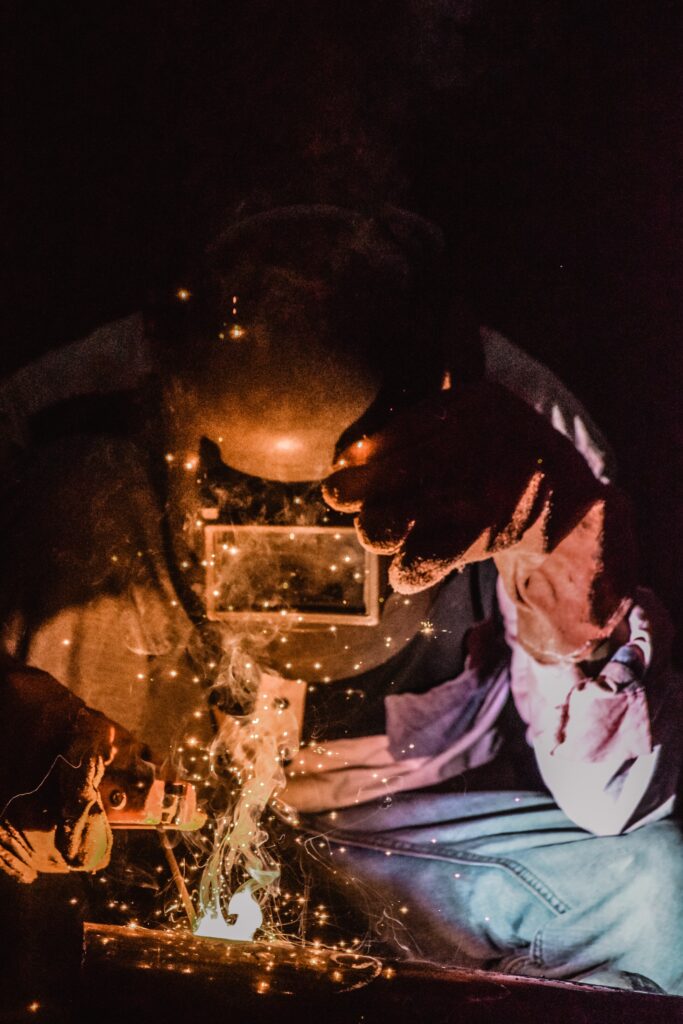
Shielded Metal Arc Welding (SMAW) or Stick
Introducing SMAW or Stick welding
Shielded Metal Arc Welding (SMAW), commonly known as Stick welding, is one of the oldest and most widely used welding techniques. It employs a consumable electrode coated with flux to produce the weld joint. Stick welding is known for its versatility, simplicity, and ability to work in different environmental conditions.
Why Stick welding might be difficult
Stick welding can be challenging due to several factors. One difficulty lies in striking an arc, which requires proper electrode positioning and skillful technique. Maintaining a stable arc and controlling the electrode while simultaneously manipulating the filler material can be demanding for beginners. Furthermore, the slag produced during Stick welding needs careful removal to avoid defects in the weld.
Guidelines for improving Stick welding skills
To enhance Stick welding skills, consider the following guidelines:
- Choose the right electrode: Select the appropriate electrode for the material being welded and the desired weld characteristics. Different electrodes have specific properties and applications.
- Practice arc striking: Master the technique of striking an arc by practicing on scrap metal and finding the right balance between electrode angle, position, and current.
- Maintain a consistent arc length: Controlling the arc length is crucial for Stick welding. Practice maintaining a steady arc length and adjusting it based on the welding conditions and joint configuration.
- Proper slag removal: Take care to remove slag between passes to prevent defects or impurities in the weld. Use a chipping hammer or a wire brush to remove slag effectively.
Flux Cored Arc Welding (FCAW)
Understanding FCAW method
Flux Cored Arc Welding (FCAW) is a welding process that uses a tubular wire filled with flux instead of a solid electrode. The flux provides shielding from atmospheric contamination and forms a slag over the weld, ensuring proper bead formation. FCAW is versatile, offering high deposition rates and excellent penetration, making it useful in construction, shipbuilding, and heavy fabrication.
Challenges in mastering FCAW
While FCAW has several advantages, it also presents some challenges to welders. One difficulty lies in selecting the right welding parameters, including wire speed, voltage, and shielding gas flow rate. These parameters can significantly affect the quality and strength of the weld. Additionally, FCAW produces more fumes and requires proper ventilation and personal protective equipment.
Ways to better FCAW skills
To improve FCAW skills, consider the following strategies:
- Understand the different types of flux-cored wires: Different flux-cored wires have specific applications, so familiarize yourself with their characteristics and select the appropriate wire for the task at hand.
- Tune the welding parameters: Experiment with different wire speeds, voltages, and shielding gas flow rates to find the optimal settings for the desired weld quality.
- Practice vertical and overhead positions: FCAW is well-suited for welding in vertical and overhead positions. Gain proficiency in these positions by practicing on scrap material and adjusting your technique accordingly.
- Focus on good joint preparation: Proper joint preparation, including cleaning, beveling, and fit-up, is essential for FCAW. Ensure that the joint is clean, well-aligned, and free from any contaminants or gaps.
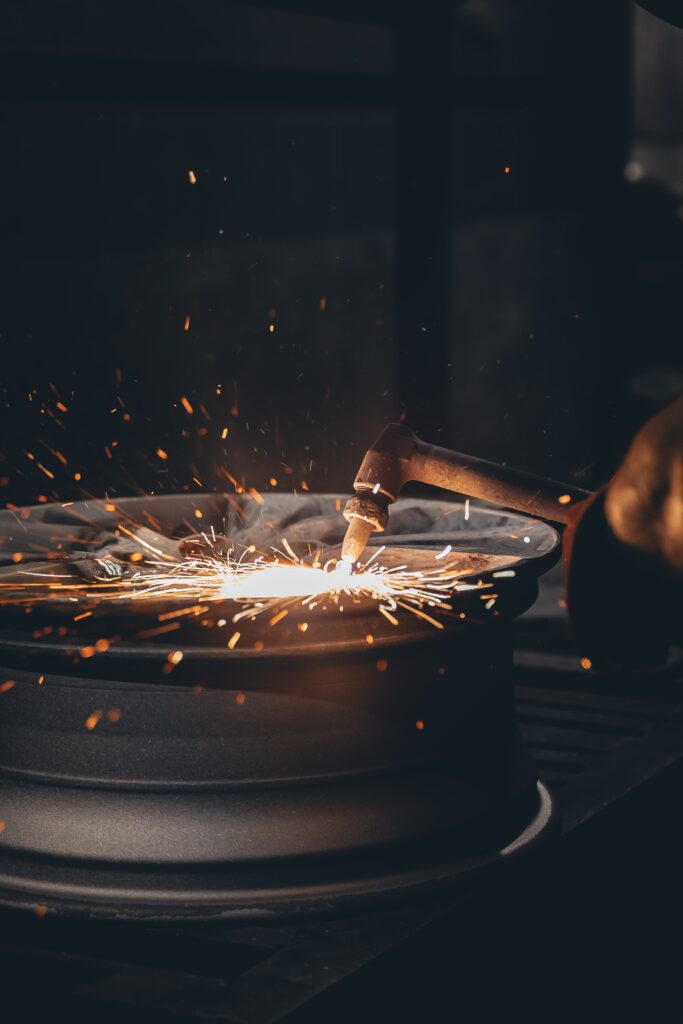
Gas Metal Arc Welding (GMAW) or MIG
Introduction to MIG welding
Gas Metal Arc Welding (GMAW), commonly known as MIG (Metal Inert Gas) welding, is a widely used welding process. It utilizes a continuously fed wire electrode, an inert gas shield, and, if necessary, a shielding gas to protect the weld pool from atmospheric contaminations. MIG welding offers high productivity and speed, making it popular for applications such as automotive manufacturing and fabrication.
Difficulties encountered in learning MIG welding
MIG welding presents certain difficulties for beginners. One of the main challenges lies in controlling the weld pool and avoiding excessive spatter. Achieving proper penetration without defects like lack of fusion or porosity demands skillful technique and adjusting the welding parameters accurately. Additionally, MIG welding requires appropriate wire feed speed and gas flow rate, which can vary depending on the material thickness and joint configuration.
Hints for successful MIG welding
To achieve successful MIG welding, keep the following hints in mind:
- Select the correct welding wire and shielding gas: Different materials and applications require specific wire and shielding gas combinations. Ensure that you choose the appropriate ones to achieve the desired weld characteristics and quality.
- Pay attention to the wire feed speed: Proper wire feed speed is crucial for maintaining a stable and consistent arc. Practice adjusting the wire feed speed based on the welding position, joint design, and material thickness.
- Control heat input: Avoid excessive heat input by maintaining an appropriate travel speed. Proper control of heat helps prevent distortion or burn-through while ensuring good fusion.
- Clean the joint and remove contaminants: Proper joint preparation is essential for MIG welding. Make sure the joint surfaces are clean, free from rust, dirt, or grease, to achieve a strong and sound weld.
Understanding Underwater Welding
The concept of underwater welding
Underwater welding is a specialized form of welding that takes place in underwater environments. It involves the joining of two or more metal pieces beneath the water’s surface. The unique challenges of working underwater, including limited visibility, water pressure, and hazardous conditions, make underwater welding one of the most demanding welding techniques.
Reasons behind difficulty of underwater welding
Underwater welding presents significant difficulties due to the harsh underwater environment. Limited visibility can make it challenging for welders to accurately position and control the welding arc. The presence of water adds complexity to the welding process, as water can cool the welding arc rapidly, affecting the weld quality. Additionally, underwater welders face potential hazards such as electrical shock, decompression sickness, and entanglement.
Techniques to learn underwater welding properly
To learn underwater welding properly and safely, aspiring underwater welders should consider the following techniques:
- Acquire adequate training: Underwater welding requires specialized training and certification. Seek out reputable training programs that cover the necessary theoretical knowledge, practical skills, and safety protocols.
- Develop diving skills: Becoming a proficient diver is crucial to safely access underwater welding sites. Obtain certifications in commercial diving and gain experience in various diving conditions and techniques.
- Master dry and wet welding: Underwater welding can be performed using either dry or wet welding methods. Each technique presents unique challenges and requires specialized skills. Gain proficiency in both methods to maximize your opportunities in the field.
- Prioritize safety: Safety is of utmost importance in underwater welding. Always adhere to safety procedures, use proper diving and welding equipment, and consult with experienced professionals before attempting any underwater welding job.
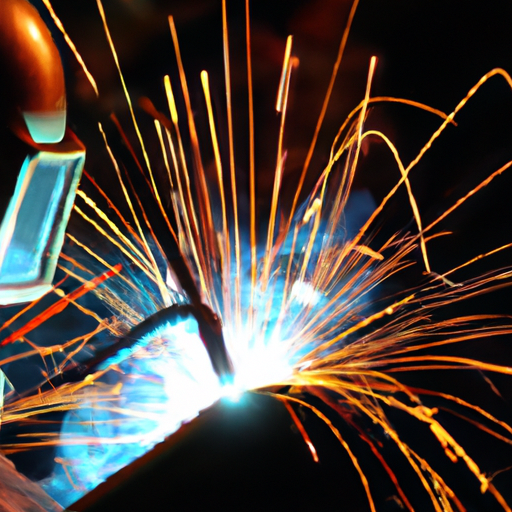
Exploring Laser Beam Welding (LBW)
Basics of laser beam welding
Laser Beam Welding (LBW) is a high-precision welding technique that utilizes a concentrated beam of laser light to create strong welds. The laser beam melts and fuses the workpieces together with minimal heat input, resulting in a small heat-affected zone. LBW is commonly used in industries that require high accuracy and control, such as electronics, medical devices, and aerospace.
Why LBW is an intricate welding process
LBW is considered an intricate welding process due to its precision requirements and unique challenges. The high power density of the laser beam demands accurate control of the welding parameters to achieve optimal weld quality. Moreover, LBW is sensitive to variations in joint fit-up, cleanliness, and material thickness, requiring meticulous attention to detail.
Steps to improve LBW skills
To improve LBW skills and overcome its intricacies, follow these steps:
- Understand laser system components: Familiarize yourself with the laser system components, including the laser source, delivery system, and focusing optics. Understand their functions and how different settings affect the weld.
- Optimize welding parameters: Experiment with different laser power levels, travel speeds, and focal lengths to find the optimal parameters for the specific material and joint design. Fine-tuning the parameters is crucial for achieving high-quality welds.
- Focus on joint preparation: Proper joint fit-up and cleanliness are essential for LBW. Ensure that the joint surfaces are clean, aligned accurately, and free from any contaminants or gaps.
- Practice beam delivery and manipulation: Develop skills in directing and manipulating the laser beam accurately. Smooth and precise movements are vital to achieving consistent weld quality.
Conclusion: The Hardest Type of Welding
Welding is a versatile and necessary skill in various industries, allowing for the creation and repair of crucial structures and products. While all types of welding have their own challenges and intricacies, some are undoubtedly more difficult to learn than others.
Taking into account all types of welding
Considering the different types of welding techniques discussed, it is evident that each has its own set of complexities. Manual welding methods like SMAW and GTAW demand significant skill and precision. Semi-automatic welding processes like FCAW and MIG require attention to welding parameters and technique. Automatic and robotic welding introduce the need for programming and operating advanced machinery. Specialized techniques like underwater welding and laser beam welding involve additional complexities due to their unique environments or precision requirements.
Highlighting the most difficult welding type to learn
While it is subjective to some extent, TIG welding (GTAW) is widely recognized as one of the most challenging types of welding to learn. The precise control required for TIG welding, combined with the demanding technique and extensive practice needed to achieve high-quality welds, make it a formidable skill to master. The difficulties in TIG welding include heat control, filler metal manipulation, and hand-eye coordination, among others.
Strategies to conquer the hardest welding type
To conquer the challenges of TIG welding or any other difficult welding technique, aspiring welders can employ several strategies:
- Seek comprehensive training and guidance from experienced professionals or reputable institutions.
- Dedicate ample time to practice and hone the necessary skills, focusing on proper technique and controlling the welding variables.
- Learn from mistakes and continuously seek improvement, utilizing feedback and seeking advice from accomplished welders.
- Take advantage of resources such as books, online tutorials, and welding communities to expand knowledge and learn from experienced welders.
- Embrace a patient and determined mindset, as mastering the most challenging welding types often requires perseverance and dedication.
By understanding the various welding techniques, acknowledging the difficulties they present, and implementing effective strategies, aspiring welders can overcome challenges and develop the skills necessary to excel in the field of welding.
